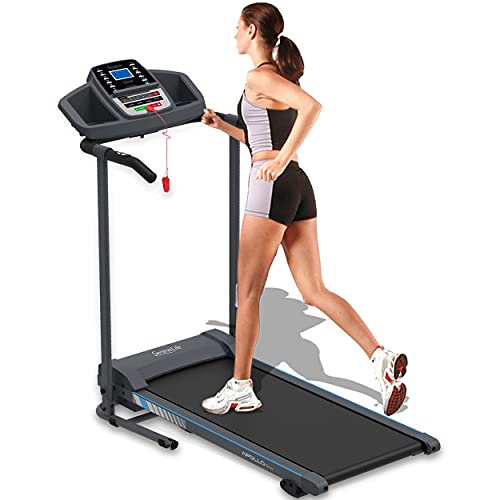Why Treadmill Non Electric Doesn't Matter To Anyone
Treadmill Non-Electric: The Eco-Friendly Fitness Solution
In an age controlled by electric makers and modern gadgets, the simple non-electric treadmill sticks out as a beacon of simplicity and efficiency. Often overshadowed by their high-tech equivalents, non-electric treadmills offer numerous benefits that accommodate a sustainable way of life and a solid workout. This post will explore the advantages, functionality, and range of non-electric treadmills, making a strong case for their function in contemporary physical fitness regimens.
What is a Non-Electric Treadmill?
A non-electric treadmill, also known as a manual treadmill, operates without electric power. Rather, it depends on the user's energy to move the belt. This kind of treadmill usually has a curved or flat running surface area and a belt that moves as the user walks or runs, consequently offering a full-body cardiovascular exercise.
Key Features of Non-Electric Treadmills
Feature
Description
Power Source
Manual operation (user-powered)
Design
Curved or flat treadmill surface area
Portability
Normally light-weight and simple to move
Resilience
Less mechanical parts; frequently made from premium products
Expense
Normally more economical than electric treadmills
Footprint
Typically smaller sized, making them suitable for limited spaces
Noise Level
Quieter operation compared to electric versions
The Advantages of Non-Electric Treadmills
1. Eco-Friendly
Non-electric treadmills are a sustainable choice for fitness enthusiasts. With no electricity usage, they minimize carbon footprints and total energy consumption.
2. Cost-efficient
With fewer mechanical components and no circuitry systems, non-electric treadmills are normally more affordable. This makes them available and appealing to individuals looking to keep a healthy way of life without breaking the bank.
3. Increased Workout Intensity
Given that the user powers the belt, they have complete control over their exercise's strength. The harder you press, the more calories you burn. This self-powered feature encourages a more engaged exercise, pressing limits for a better fitness result.
4. Compact and Portable Design
The majority of non-electric treadmills have a lightweight building and construction and smaller sized footprint, making them easy to shop and transport. This feature permits users to integrate cardio exercises into numerous settings, whether in your home, in the workplace, or at a fitness center.
5. Lower Maintenance
Non-electric treadmills have fewer moving parts than electric variations, which equates to decrease upkeep expenses and less mechanical failures over time.
Kinds Of Non-Electric Treadmills
Non-electric treadmills can be found in numerous styles to accommodate varied physical fitness requirements. Here's a short introduction:
Type
Description
Curved Manual Treadmill
Functions a curved running surface area for a natural gait. Outstanding for sprinting and interval exercises.
Flat Manual Treadmill
A simple style similar to standard treadmills but powered by the user's movement.
Foldable Manual Treadmill
Compact design that can be quickly folded and kept away when not in use. Perfect for small home.
All-Terrain Manual Treadmill
Designed for outdoor usage, these treadmills often include a rugged develop and traction control.
Regularly Asked Questions (FAQ)
1. Are non-electric treadmills suitable for novices?
Yes, non-electric treadmills can be appropriate for novices. Users can change the intensity and speed of their exercises based upon their fitness level.
2. Can I utilize a non-electric treadmill for running?
Definitely! Numerous non-electric treadmills, specifically curved designs, are created for running. Continuing -powered nature allows users to take part in jogging or sprinting.
3. What kinds of exercises can I perform on a non-electric treadmill?
Users can take part in different workouts, consisting of walking, jogging, running, interval training, and even hill exercises by changing their position.
4. How do I maintain a non-electric treadmill?
Fundamental maintenance consists of routinely inspecting the belt for wear, guaranteeing it is focused, and cleaning the surface to prevent debris from impacting movement.
5. Are non-electric treadmills loud?
Non-electric treadmills tend to be quieter than electric ones, as they lack motors that can develop sound. Users may still create noise based upon their speed and weight.
Tips for Maximizing Your Non-Electric Treadmill Workouts
To get the most out of your non-electric treadmill sessions, consider the following ideas:
Warm-Up Properly: Always start with a warm-up session to prepare your body for the workout.
Integrate Interval Training: Alternate between high-intensity sprints and moderate walking to boost calorie burn and improve endurance.
Concentrate on Form: Maintain appropriate posture and type while going to reduce the threat of injury.
Hydration is Key: Keep water nearby to remain hydrated throughout your exercises.
Track Your Progress: Use a fitness tracker or smart device to monitor your exercise performance and development gradually.
The non-electric treadmill stands out as a long-lasting, environment-friendly piece of exercise devices that efficiently accommodates both newbies and experienced fitness enthusiasts. With its plethora of benefits, including cost-effectiveness, ease of usage, and portability, it provides a sustainable option in the developing fitness landscape. For those seeking to streamline their workouts while embracing an active lifestyle, non-electric treadmills might be the best service. It's time to redefine your exercise experience away from the diversions of innovation and toward the essentials that keep you fit and healthy!
